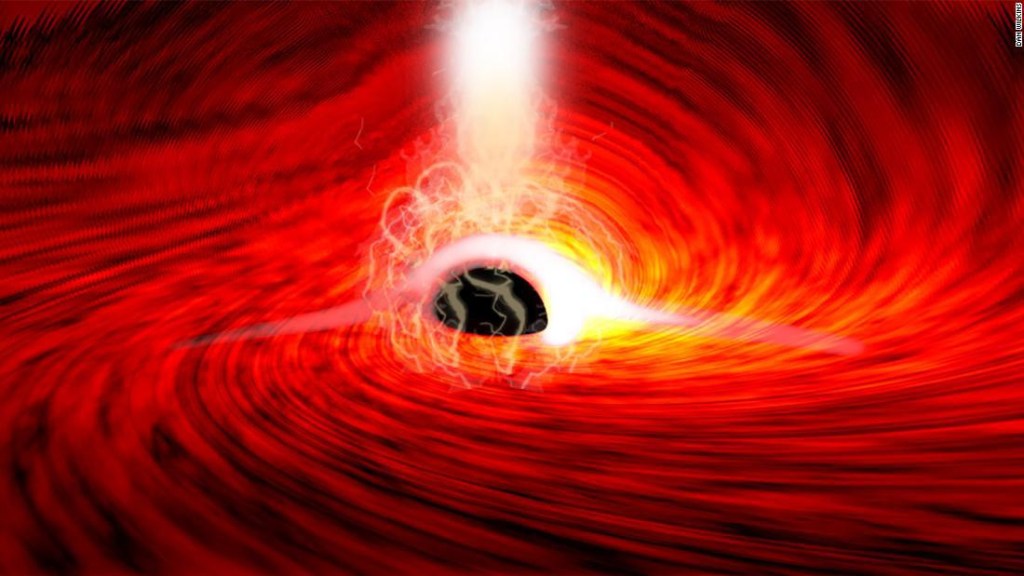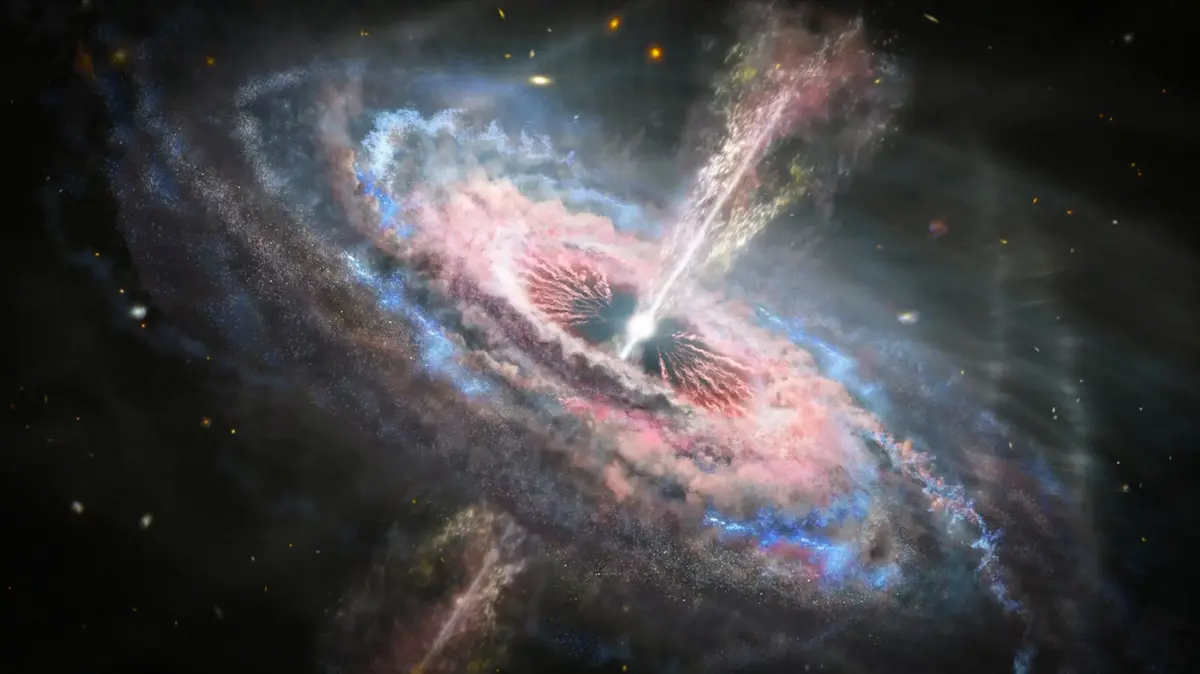Astrophysicists detect light coming from black hole 0:43
(CNN) -
It's a light show in space like no other.
For the first time, scientists have detected light behind a black hole, thus fulfilling a prediction based on Albert Einstein's theory of general relativity.
Stanford University astrophysicist Dan Wilkins and his colleagues observed X-rays released by a supermassive black hole at the center of a galaxy that is 800 million light-years from Earth.
These bright flares of light are not unusual because, although light cannot escape from a black hole, the enormous gravity that surrounds it can heat the material to millions of degrees.
This can release radio waves and X-rays. Sometimes this superheated material is launched into space in fast bursts, including X-rays and gamma rays.
For the first time, they detect X-rays on Uranus that would be key to understanding the planet
But Wilkins observed smaller X-ray flashes that occurred later and were of different colors, coming from the far side of the black hole.
"Any light that goes into that black hole doesn't come out, so we shouldn't be able to see anything behind the black hole," said Wilkins, study author and researcher at the Kavli Institute for Particle Astrophysics and Cosmology at Stanford University. and the National Laboratory of Accelerators SLAC, in a statement.
However, the strange nature of the black hole made the observation possible.
advertising
"The reason we can see that is because that black hole is warping space, bending light and twisting magnetic fields around it," he said.
X-ray flares have been seen for the first time from the far side of a black hole, as shown in this representation.
The study was published last Wednesday in the journal
Nature.
"Fifty years ago, when astrophysicists began to speculate about how the magnetic field might behave near a black hole, they had no idea that one day we might have the techniques to directly observe it and see Einstein's general theory of relativity in action, "said Roger Blandford, study co-author and Luke Blossom Professor at the School of Humanities and Sciences and a professor of physics at Stanford University, in a statement.
Einstein's theory, or the idea that gravity is the matter that warps space-time, has persisted for a hundred years as new astronomical discoveries have been made.
Wormholes: Einstein mentioned them in his theory of relativity, and now science confirms that they can exist
Some black holes have a corona, or ring of bright light that forms around a black hole when material falls into it and is heated to extreme temperatures.
This X-ray light is one of the ways that scientists can study and map black holes.
When gas falls into a black hole, it can reach millions of degrees.
This extreme heating causes electrons to separate from atoms, creating a magnetic plasma.
The powerful gravitational forces of the black hole cause this magnetic field to arch above the black hole and rotate until it breaks.
This is no different than the corona of the sun, or the hot outer atmosphere.
The surface of the sun is covered in magnetic fields, which cause loops and feathers to form as they interact with charged particles in the solar corona.
For this reason, scientists call the ring that surrounds black holes a corona.
Find the closest black hole to Earth?
0:39
"This magnetic field, which binds and moves closer to the black hole, heats everything around it and produces these high-energy electrons that then produce X-rays," Wilkins explains.
While studying the X-ray flares, Wilkins detected smaller flares.
He and his research colleagues found that the larger X-ray flashes were reflected and "bent around the black hole from the back of the disk," allowing them to see the far side of the black hole.
"I had been building theoretical predictions for a few years about what these echoes look like," Wilkins said.
"I had already seen them in the theory that I have been developing, so once I saw them in the telescope observations, I was able to make the connection."
The observations were made with two space-based X-ray telescopes: NASA's NuSTAR and the European Space Agency's XMM-Newton.
More observations will be needed to understand these black hole crowns, and the European Space Agency's next X-ray observatory, called Athena, will launch in 2031.
The European Space Agency finds a new type of gas on Mars
"It has a much larger mirror than we've ever had in an X-ray telescope and it's going to allow us to get higher resolution looks at much shorter observation times," Wilkins said.
"So the image that we are starting to get from the data right now is going to be much clearer with these new observatories."
Black HoleGravity












